Miss Starmus VII? Want to know what that was all about? Read on…
Reproduced here, with very kind permission of David J Eicher, Editor, Astronomy Magazine, a full and welcome synopsis of the recently concluded Starmus VII Festival in Bratislava. Event extraordinarily wide-ranging. A fascinating read…

ASTRONOMY.COM
Starmus VII hit all the right notes from beginning to end
Put together stars and music and you get Starmus, a world-class event that combines science and the arts to make the world a better place.
By David J. Eicher | Published: May 24, 2024
The seventh Starmus Festival took place May 12–17 in Bratislava, Slovakia, and was a smashing success all the way around. Starmus stands for stars and music, and this celebration has grown into the greatest science festival in the world. It is the creation of astronomer Garik Israelian, the director, and his friend Brian May, who is an astronomer and also the founding guitarist of the great rock band Queen. The idea of Starmus is to exercise both the analytical and creative halves of the mind, exploring all the sciences and the arts to make the world a better place. The festival is famous for bringing together many Nobel Prize laureates, astronaut-explorers, and top scientists and artists from all fields.
I’ve been delighted to be a member of the Starmus board along with Garik and Brian for years now, and was involved with the festival again this year. I hosted the opening day, delivered a talk on galaxies, participated in our press conference, and joined in events centered on the board. It was once again a spectacular experience, this one my sixth Starmus.
The night before the festival commenced, we staged a huge concert adjacent to one of the city’s iconic features, the so-called UFO Bridge. The great master of electronic music, Jean-Michel Jarre, famous for some of the largest concerts in history, amazed the audience that swelled far beyond the arena that was built, spilling into the city, and perhaps amount to 25,000 or 30,000 people. Brian May joined Jean-Michel late in the show for some collaborative numbers, and it was a spectacular and mesmerizing experience with countless lasers and a staggering number of fireworks. Just stunning. I am proud to say that Jean-Michel has joined our Starmus board.
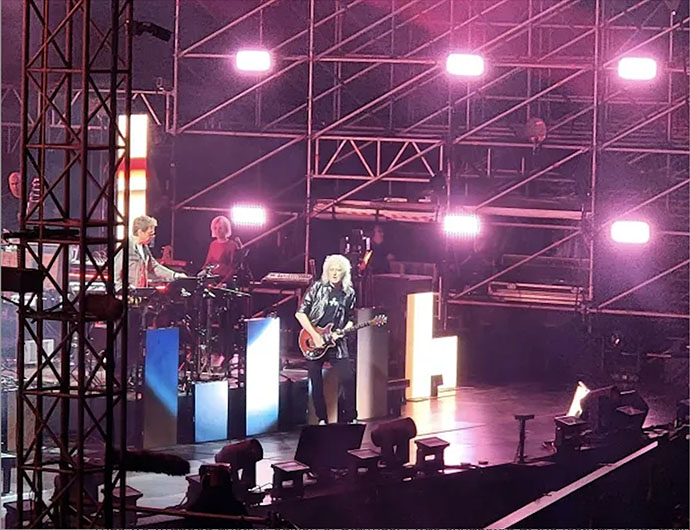
The next day, Starmus began in earnest. This year’s theme was Starmus Earth, and it reminded me of a saying we used to have at Astronomy Magazine — “Earth is a planet too.” It’s the only one in the cosmos we know of that supports life, and so we need to take care of it for future generations thousands and millions of years into the future. Climate change and associated topics became a big feature of the first day’s talks, as the science of putting so much carbon dioxide, methane, and other compounds into the atmosphere is transforming Earth in a bad way.
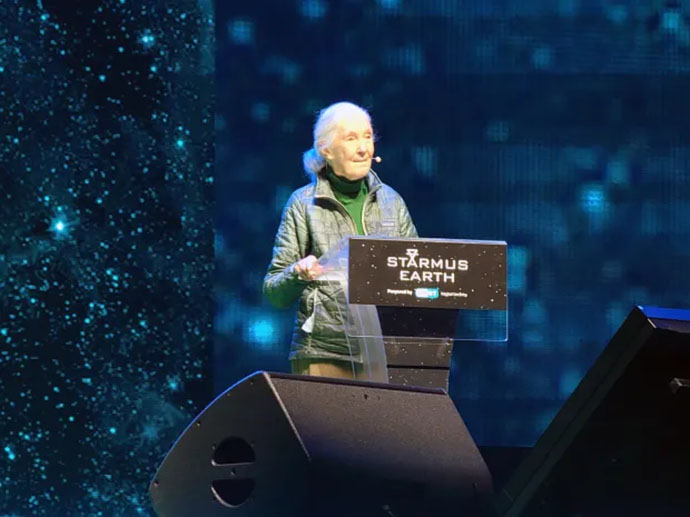
First-day talks included those by the great Jane Goodall, celebrated for being the world’s leading authority on chimpanzee behavior, the founder of the Jane Goodall Institute, and now a new member of our Starmus board. It is hard to place many people in the world who are as inspiring to listen as than Jane Goodall. We also heard from climate scientist Katharine Hayhoe, who gave us an overview of where the climate change problem now stands. Nat Keohane, a former adviser to the Obama White House, described how capitalism has contributed to climate change and how it may help to solve the problem. Mary Kaldor explored how war may be an anachronism. The legendary Sylvia Earle, master of the oceans, delivered a spectacular talk about the deep frontier of oceanography.
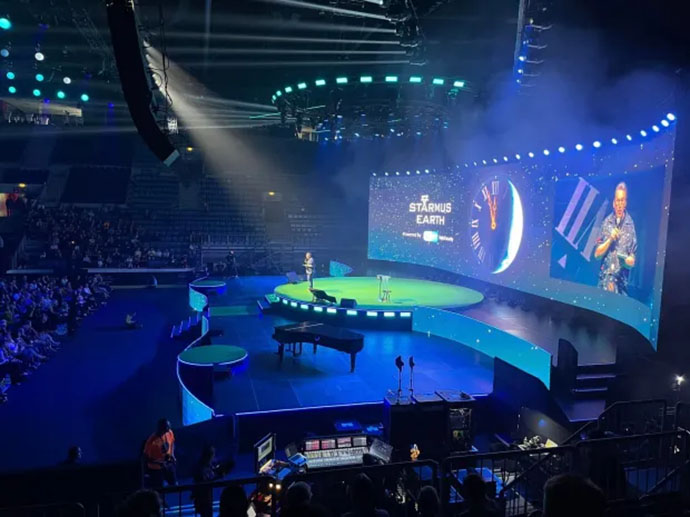
And talks on the first day rolled on. Steven Chu, formerly Barack Obama’s Secretary of Energy and now a professor at Stanford, described the challenge of getting to net-zero GHG emissions. Columbia’s Maureen Raymo described the relationship between carbon dioxide and sea level. Finally, panel discussions explored atmospheric rivers, the flow of temperatures and salinity in the oceans (Ros Rickaby and Bob Bishop) and collapsing ice in the Antarctic (Svitlava Krakovska and Chris Rapley).
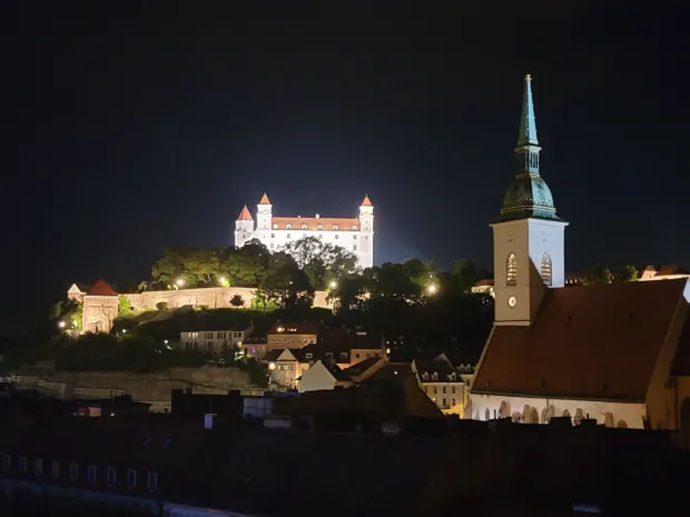
And all of that comprised Day 1. The festival’s second day explored technological issues, beginning with Edvard Moser’s talk on whether humans are born with a sense of space. Apollo 16 moonwalker Charlie Duke then delivered a look ahead at the Artemis program that will carry humans back to the Moon. Starmus board member Tony Fadell, inventor of the iPod and co-inventor of the iPhone, described how innovations could help to save the world. The world’s leading expert on black holes, Kip Thorne, joined his artist collaborator Lia Halloran to wow the audience with an illustrated exploration into the warped side of the universe.
The second day also included talks by Richard Marko, CEO of the festival’s primary sponsor, the Slovakian cyber-security company ESET, on rethinking cybersecurity in the age of many global challenges. Two leading authorities on artificial intelligence then took to the stage: Bernhard Schölkopf explored how intelligent AI really is, and his friend and colleague Philip Torr delivered a lecture on AI to the people, exploring the future of this powerful tool. We concluded the second day of Starmus with a star party put on at Devin Castle, a magnificent medieval structure a short distance outside of the city. Two dozen or so telescopes were on hand, the outing organized in part by Scott Roberts of Explore Scientific and Franck Marchis of the SETI Institute and Unistellar, which enabled giving hundreds of participants great views of the cosmos at an historic and visually overwhelming place.
The third day of Starmus was a special one. We held the Stephen Hawking Medal Ceremony in which we gave four special people the prize named for our beloved colleague. I was privileged to give the first Hawking Medal to the great musician and avant-garde artist Laurie Anderson, a true lover of science and nature. We then awarded a Hawking Medal to Christopher Nolan, the great filmmaker, and then another to the legendary David Attenborough, one of the world’s greatest naturalists. The final Hawking Medal went to pioneering oceanographer Sylvia Earle.
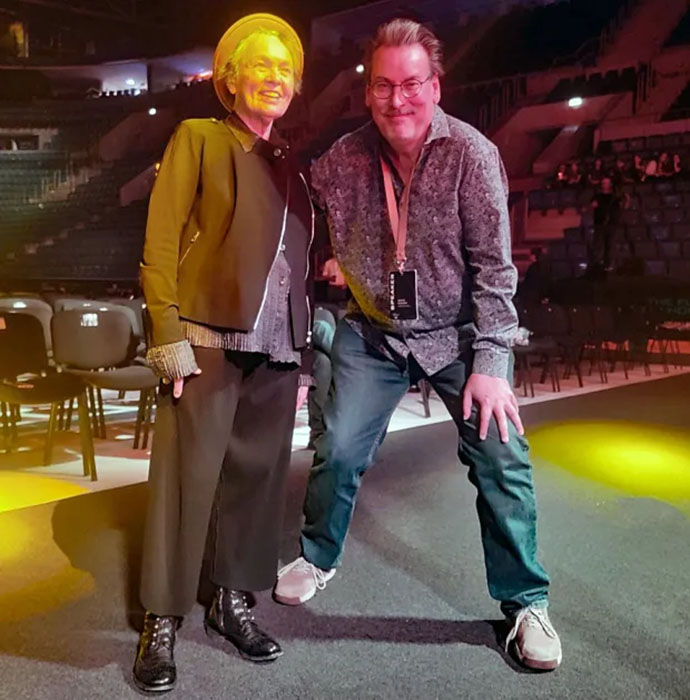
Following the Hawking Medal Ceremony, we presented the usual Sonic Universe Concert. This time our amazing rock show featured The Offspring, along with Brian May (who offered a sizzling rendition of Queen’s “Stone Cold Crazy”), the always-incredible keyboard work of our pal Rick Wakeman, Tony Hadley of Spandau Ballet (who presented a great rendition of the mega-hit “True,” among others), and more.
On the festival’s fourth day, we were back to business with talks. This day was heavy with Nobel Prize winners. Our good friend Martin Rees, Astronomer Royal of Britain, delivered a talk about post-human intelligence. The great cosmologist George Smoot walked us through the history of cosmological thought and the known parameters of the cosmos. Michel Mayor, discoverer of the first exoplanet orbiting a sunlike star, describes the paradigm change we are undergoing in discovering vast numbers of planetary systems. And Laurie Anderson talked about building an ark for humanity.
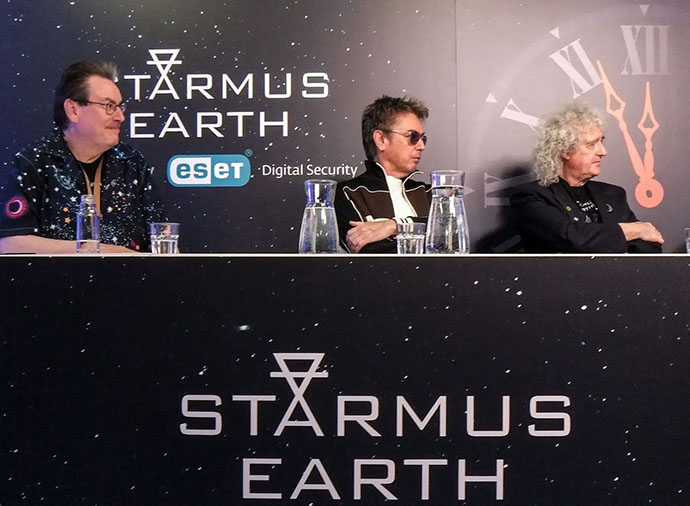
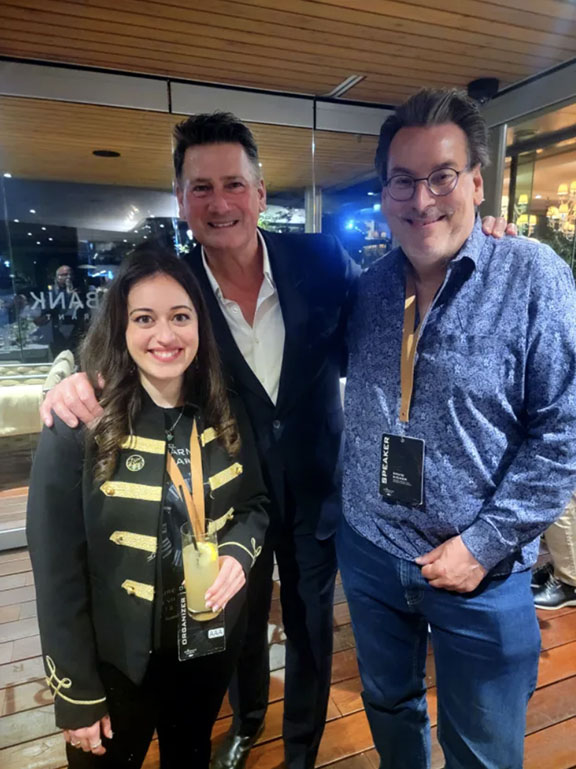
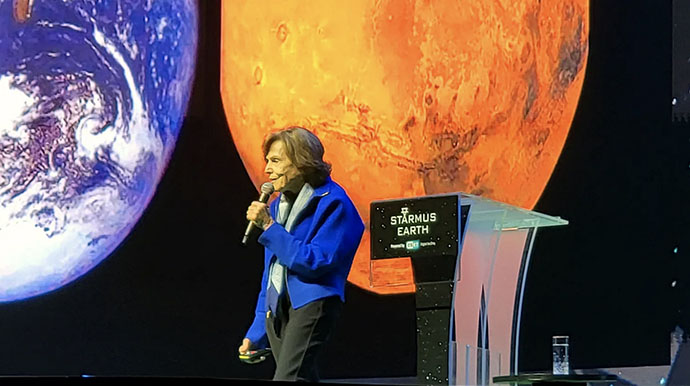
The great oceanographer Sylvia Earle gave us a state-of-the-art analysis of what is happening with the world’s oceans, and what we need to do about it. Credit: David J. Eicher.
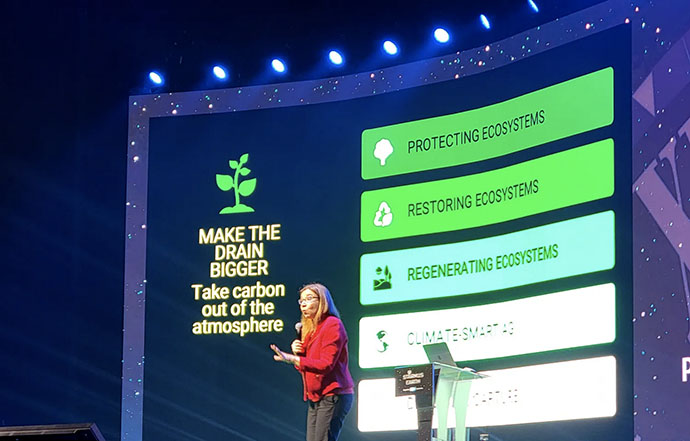
We continued with an array of imaginative and entertaining presentations. Anton Zeilinger explored randomness and reality, Donna Strickland explored global environmental monitoring, and Kurt Wüthrich examined Brownian motion and protein dynamics in solution. Late in the day the group held a round table discussion in the UFO restaurant, featuring Jane Goodall, Tony Fadell, Laurie Anderson, Chris Hadfield, Dexter Holland, Garik Israelian, Katharine Hayhoe, and Steven Chu.
Our final day of Starmus festivities ended with a bang, and with another full slate of talks. Astronauts led off, as Kathryn Thornton described the Hubble Servicing Mission that fixed the great space telescope’s optics in the early 1990s. Chris Hadfield followed with a great talk about space junk and what we might do about the vast storehouse of debris in low-Earth orbit. Neil Lawrence then spoke about what makes humans unique in the age of AI, and Garrett Reisman described innovation at both NASA and SpaceX that he has experienced.
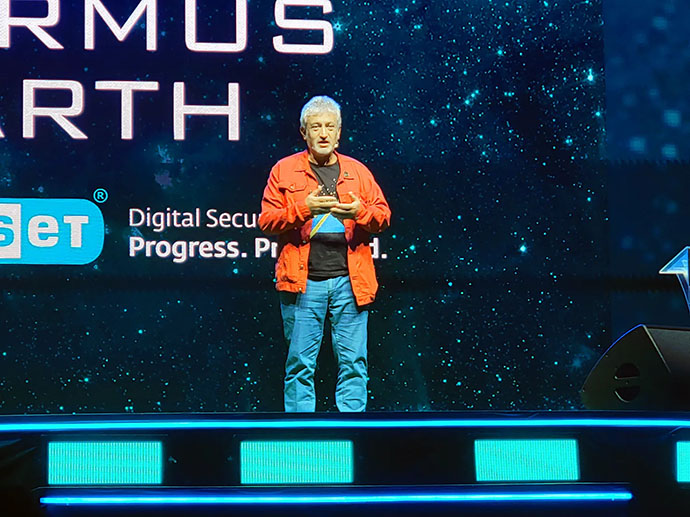
I was privileged to help my old pal Robin Rees, publisher of the London Stereoscopic Co., with introducing a film he has produced about the late, great Patrick Moore. We lost Patrick a decade ago but this 40-minute film about his life, and centered on an observational event for the Transit of Venus some years ago, will help us remember him well.
The final slate of talks this time commenced with Carole Mundell describing the wide range of recent and planned missions of the European Space Agency, laying out plans for a truly exciting future. Dante Lauretta described his research on Bennu and asteroid sampling missions, and delivered a great vision for asteroid research in the future. His recent 3D book on Bennu, coauthored with Brian May, served as a stellar example of publicizing the asteroid results. Brian Greene gave us a forward look into the deep future of the universe. And a final panel discussion wrapped the event, this one discussing the sense and sensibility of pushing onward to human exploration of Mars. It featured an all-star cast of Joel Parker, Patrick Michel, Scott Hubbard, and Garrett Reisman.
Thus we wrapped another edition of Starmus. I was exhausted at the festival’s end, drained by too little sleep and too many great discussions with famous scientists and artists from all over the world. You’ll see the results of some of these discussions in future editions of Astronomy Magazine. I invite you to stay tuned for those, and for news in the coming weeks and months on the next editions of Starmus, that will again bring incredible surprises.
DAVID EICHER
David J. Eicher is Editor of Astronomy, author of 26 books on science and history, and a board member of the Starmus Festival and of Lowell Observatory
—